

Background
This revival account lays the foundation for a worldwide spiritual awakening that spread like wildfire during the early 20th century. While these were not the only prayers that contributed to this global revival, these prayers did play a significant role. They were the prayers of a mother for her son, a newly converted woman for her community, and a congregation for the world.
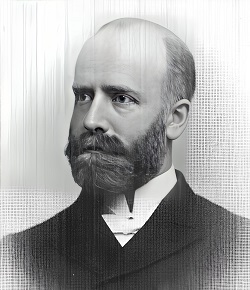
Reuben A. Torrey
A Mother’s Prayer: Torrey’s Conversion
A central figure in this revival story is Reuben Archer Torrey (1856–1928), a revivalist who gained worldwide renown through his evangelistic work.
Torrey was born into an upper-class family in Brooklyn, New York. His father, a banker, paid for all his expenses when he enrolled at Yale University at age 15. Torrey aspired to become a lawyer, like others in his family, and was determined to pursue wealth and worldly pleasures such as racetrack gambling, card games, theater, and dancing. He had decided to reject the Christian life.
However, Torrey’s ambitions for wealth and worldly living were extinguished by the persistent prayers of his mother, who spent many hours praying for him to become a minister of the Gospel.
Torrey’s Dream
In the spring of 1875, when he was 18 years old, Torrey dreamed that his mother had died, though she was still alive. In the dream, he was sleeping in his childhood room when his mother appeared as an angel, asking him to become a minister of the Gospel. He promised her in the dream that he would.
Sometime afterward, he became overwhelmed with despair. He could not shake the memory of that promise. One night, in total agony, he jumped out of bed and searched for a straight-edged razor, intending to take his own life—but he could not find it. In desperation, he fell to his knees and cried out to God, promising that if God would relieve the burden on his heart, he would preach the Gospel. Immediately, peace filled his soul.
At the end of his senior year at Yale, Torrey publicly professed his faith in Jesus Christ in the college chapel. He then enrolled in the Yale theological department the following fall.
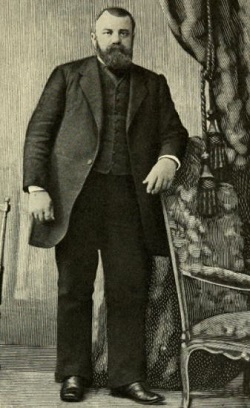
D.L. Moody
Meeting D. L. Moody
Dwight L. Moody (1837–1899), often regarded as the greatest evangelist of the 19th century, visited Yale Theological Seminary during Torrey’s senior year to speak on evangelism. Moody provided the students with Scriptures for leading others to Christ and challenged them, saying, “You go at it.”
This was Torrey’s first encounter with Moody, but it would not be his last. In 1889, Torrey joined Moody in his evangelistic work in Chicago, becoming the superintendent of the Bible Institute of the Chicago Evangelization Society (now Moody Bible Institute). In 1894, he also became pastor of the Chicago Avenue Church (now the Moody Church).

Congregational Church, Garrettsville, Ohio
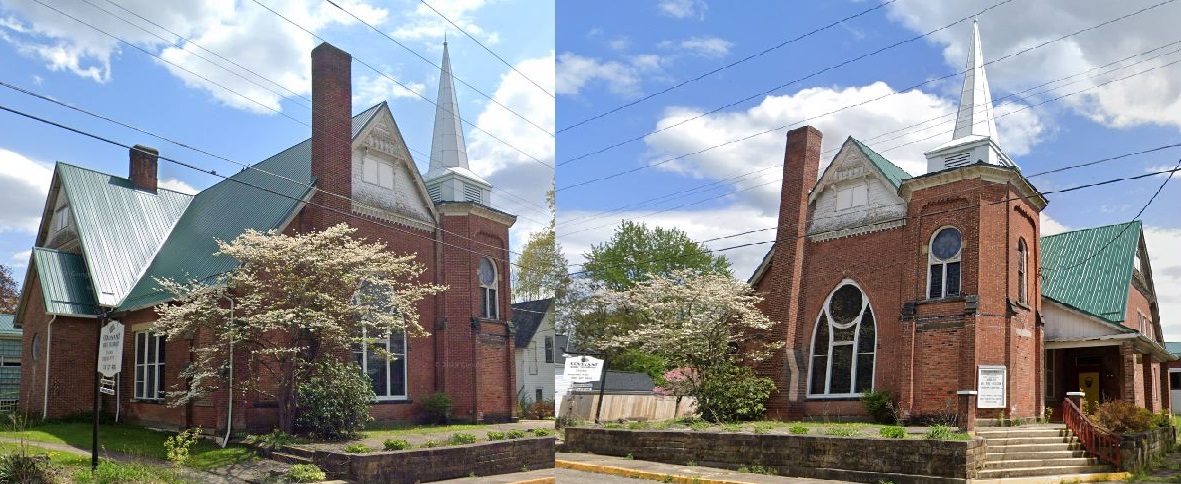
Congregational Church building today
A New Convert’s Prayer
While still at Yale, Torrey received an invitation to pastor a Congregational church in Garrettsville, Ohio. Reports described the town as rife with infidelity and one of the most “hardened and hopeless” places, with the three local churches (Baptist, Methodist, and Congregational) frequently quarreling.
Despite the challenges, Torrey accepted the invitation. The church had 50 members, most of whom rarely attended. Torrey, inspired by Charles Finney’s biography and Lectures on Revival, began his ministry believing that revival was the church’s natural state.
After two months with little progress, two women in the congregation were converted—one young and the other, a 50-year-old backslider. The older woman experienced a profound conversion and began fervently praying for a revival in Garrettsville. When she needed to leave and travel to California, she confidently declared prior to her departure:
I am so sorry to go because God has heard my prayer, and we are going to have a great revival.
Preaching in Saloons
While in his study writing a sermon for the coming Sunday, Torrey heard an inner voice speaking to him:
You go down to such and such a saloon in the main street, and speak down there.
At the time Torrey assumed his role as a minister was to focus almost entirely on preaching sermons. Yet that thought would not leave his mind, and the voice came to him a second time:
Go down to Horton and Thompson Saloon and speak there.
Quickly standing up, he put on his hat and coat and walked to the saloon. Upon entering, he saw some men at a table playing cards. Without any explanation he walked over to them and said:
Gentlemen, please put down those cards for a few moments. I want to have a time of prayer.
Surprised, the men complied. Torrey prayed for their salvation and appealed for them to accept Christ before leaving. With that, he left the saloon.
Days later, as Torrey was walking down the same street, the owner of a rival saloon confronted him, saying:
I hear you went into Horton and Thompson’s saloon the other day and held a prayer meeting.
Torrey confirmed that it was true, and the owner continued:
Well, isn’t my saloon as good as Horton and Thompson’s?
Taking the opportunity, Torrey entered the man’s saloon and presented the Gospel as he had before.
Preparing for Revival
The older woman’s prayers for revival had not yet been visibly answered, but Torrey prepared for it nonetheless. He spent three weeks preaching six nights per week on how to lead people to Christ, confident the revival would come.
At the end of those three weeks, Torrey met with the town’s other two ministers in this town of around 1,000, urging them to commit to united church services with all three congregations participating (Congregational, Methodist, and Baptist).
The Methodist and Baptist ministers were making conditions prior to agreeing to the meetings, which they couldn’t come to a compromise on. Torrey then said:
Gentlemen, I do not care for any conditions,—You can do all the preaching, or either one of you can do it, but we are going to have united meetings to pray that God will bless this town.
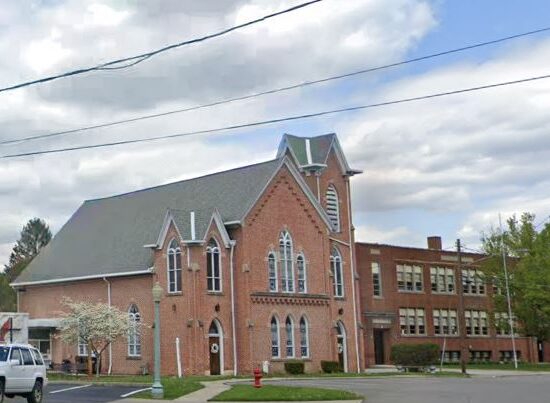
Also participating in the revival was the
United Methodist Church, Garrettsville, Ohio
Revival in Garrettsville
With the churches united, the service commenced, and the long-awaited revival broke out. Torrey reported:
The town was transformed by the revival, which broke out, and which continued into the next year, and the next year after that. Then I left, and it went right on into my next ministry, and the next, and the next, and by the grace of God, I have been in a revival all the time from that day to this.
Although we lack specific testimonies or precise conversion numbers, as well as details on how the town of Garrettsville was transformed, this period laid the foundation for the churches Torrey would later pastor and the worldwide revival tour he would lead from 1902 to 1905.
Torrey Believed in Perpetual Revival
In 1882, Torrey left Garrettsville to study theology in Germany. Upon returning in 1883, he had the option to become the pastor of a large and wealthy church in Brooklyn, New York, or a “weak and poor church in Minneapolis, Minnesota.” He chose the second—Open Door Congregational Church in Minneapolis.
Torrey indicated that there were those who believed that revivals could be perpetual, and he agreed with that. He set aside the notion that revivals were divinely and sovereignly designed to come and go like the seasons. Because of this belief, he “had a continuous revival in every church he pastored.”
So, regardless of the location of the churches he pastored, Garrettsville, two churches in Minneapolis, or the famous Chicago Avenue Church (now the Moody Memorial Church), revival was the atmosphere that settled down upon each location.
Torrey’s Key to Perpetual Revival
Torrey said that his success in experiencing a perpetual and continuous revival in the churches he pastored was due to him training his congregation “to be intelligent soul winners.”
A Congregation’s Prayers
The awakening at the beginning of the 20th century ranks right along the First, Second, and Third Great Awakenings:
► 1730s-1740s First Great Awakening
► 1790-1840 Second Great Awakening
► 1856-1858 Boston Revival (Third Great Awakening)
An observer might say that this early 20th-century awakening began in Chicago, Illinois, at the Chicago Avenue Church (now Moody Memorial Church), where R. A. Torrey was pastor. This awakening was sparked by years of persistent, sustained prayer.
In 1898, at the end of a scheduled Week of Prayer, a group from Chicago Avenue Church, founded by D. L. Moody, was stirred with a burden to pray for an awakening like those that had swept across the nation in previous generations. This group, which included the pastor, R. A. Torrey, began holding a weekly prayer meeting specifically to pray for a great spiritual awakening.
These prayer meetings took place every Saturday from 9 to 10 P.M., with attendance rapidly growing to an average of 300 people. The scheduled meetings continued month after month, even though there was no visible evidence of the revival they sought.
One Saturday night, the burden for revival became so intense that Torrey and several associates stayed after the meeting, retreating into a small room to continue praying in agony until 2 A.M. This marked the beginning of a pattern: every Saturday evening, similar meetings followed, characterized by fervent prayer and deep longing for revival. These meetings continued for three years, despite the absence of any immediate answer to their prayers.
Here Am I, Send Me
During one of these extended prayer meetings, in the early hours of Sunday morning, Torrey found himself praying on his knees alongside other men, and he began to pray for God to send him around the world to preach the Gospel. Reflecting later on this moment, Torrey remarked:
It was a prayer that I had not dreamed of offering when we entered that hallowed place that night. The prayer was this, that God would send me around the world preaching the Gospel; and when I had ceased praying I knew I was going round the world to preach the Gospel. How, I did not know. With a large church constantly increasing in membership to be pastored, I did not see how I could leave them. With the Bible Institute to be guided and instructed, I did not see how I could leave it; but I knew the call had come from God, and that God would open the way.
The Door to the World Opened
Less than a week after this prayer, two men approached Torrey at the conclusion of a regular church prayer meeting. They introduced themselves as delegates from the United Churches of Melbourne, Australia, and invited him to conduct a simultaneous mission in that city.
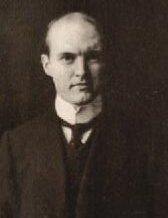
Charles Alexander
Several months earlier, these two Australian men had been sent to England and America to find the right man to come and lead evangelistic meetings in Melbourne. At this prayer meeting in Chicago, they felt assured that the Holy Spirit was directing them to invite Torrey.
Torrey could not refuse the invitation, recognizing it as the answer to years of prayer. The Australian delegates asked him to bring a choir director, and he choose Charles M. Alexander, a former student at the Bible Institute.
Worldwide Tour Launched
Australia wasn’t the only location where Torrey ministered during his time abroad. Over the next three and a half years, he conducted ministry in Japan, Australia, New Zealand, India, and throughout Great Britain.
This worldwide evangelistic tour, spanning three and a half years, resulted in over 100,000 public confessions of faith in Christ and laid the foundation for the spiritual revivals The Church of Jesus Christ would experience in the decades to follow. (See our list of revivals that occurred in rapid succession from 1900 to 1910.)
Learn more about this Torrey and Alexander Worldwide Tour through the following links:
► 1902 Melbourne, Australia Revival
► 1902 Revivals in Asia-Pacific
► 1903-1905 Great Britain Revivals
Sources
► Torrey and Alexander, The Story of a World-Wide Revival: by George T. B. Davis
► Torrey and Alexander: The Story of their Lives by J. Kennedy MacLean
► Twice Around the World with Alexander by George T. B. Davis
Return to List of Revival Stories
Chet & Phyllis Swearingen:
Office: (260) 920-8248
romans1015@outlook.com
Beautiful Feet
P.O. Box 915
Auburn, IN 46706

